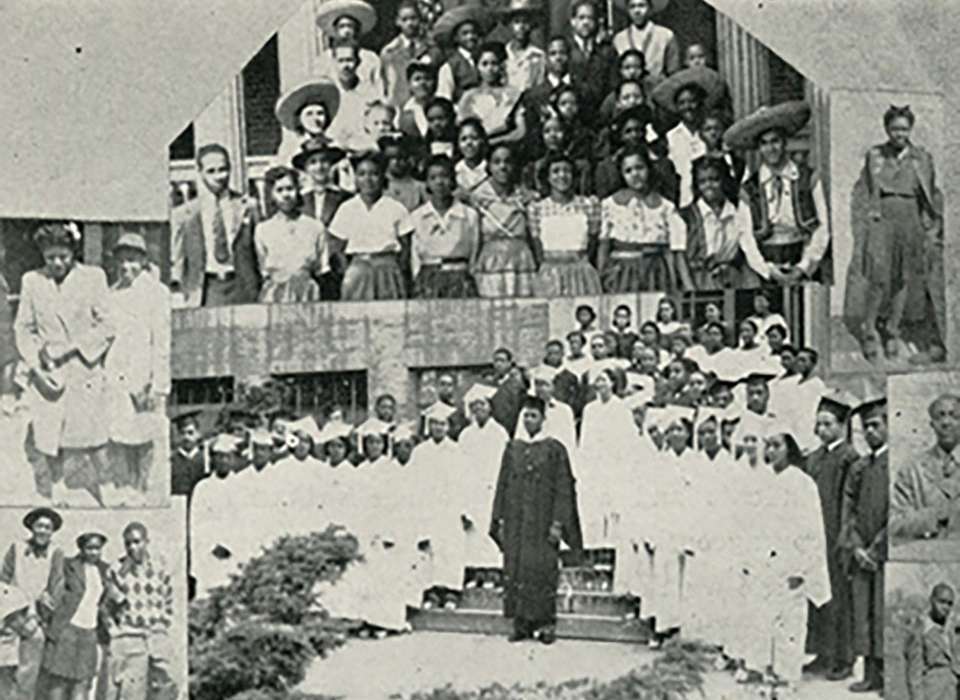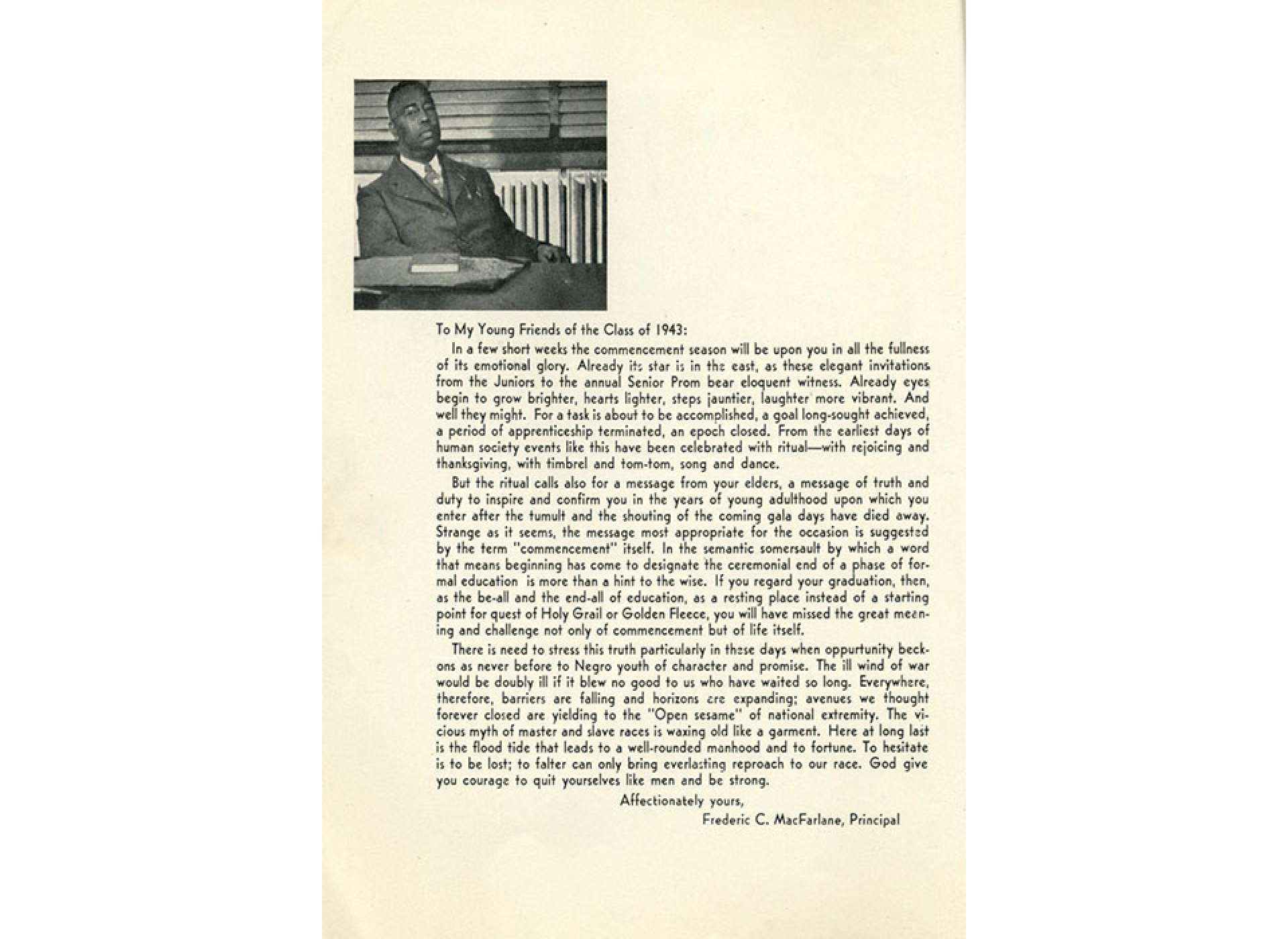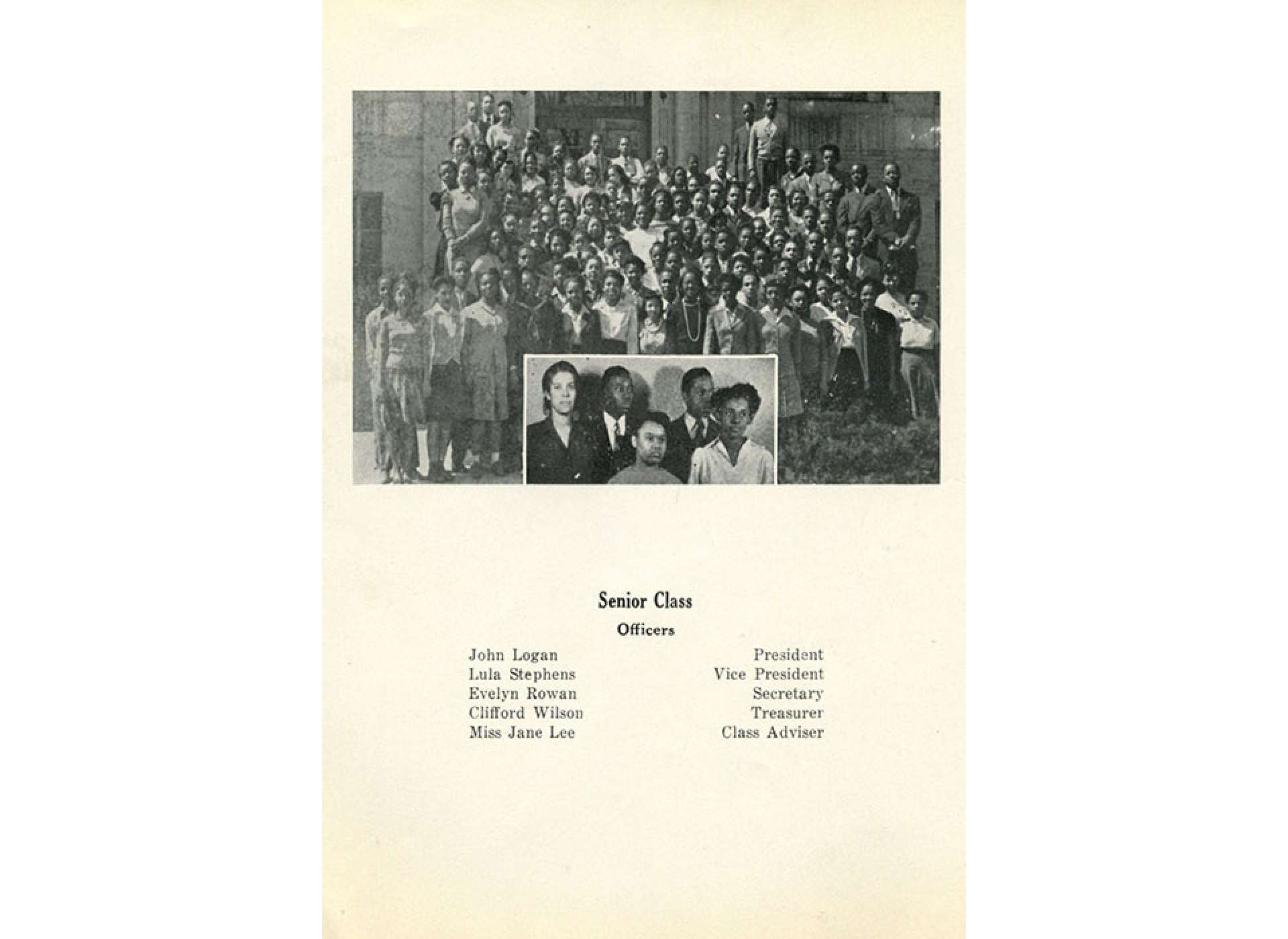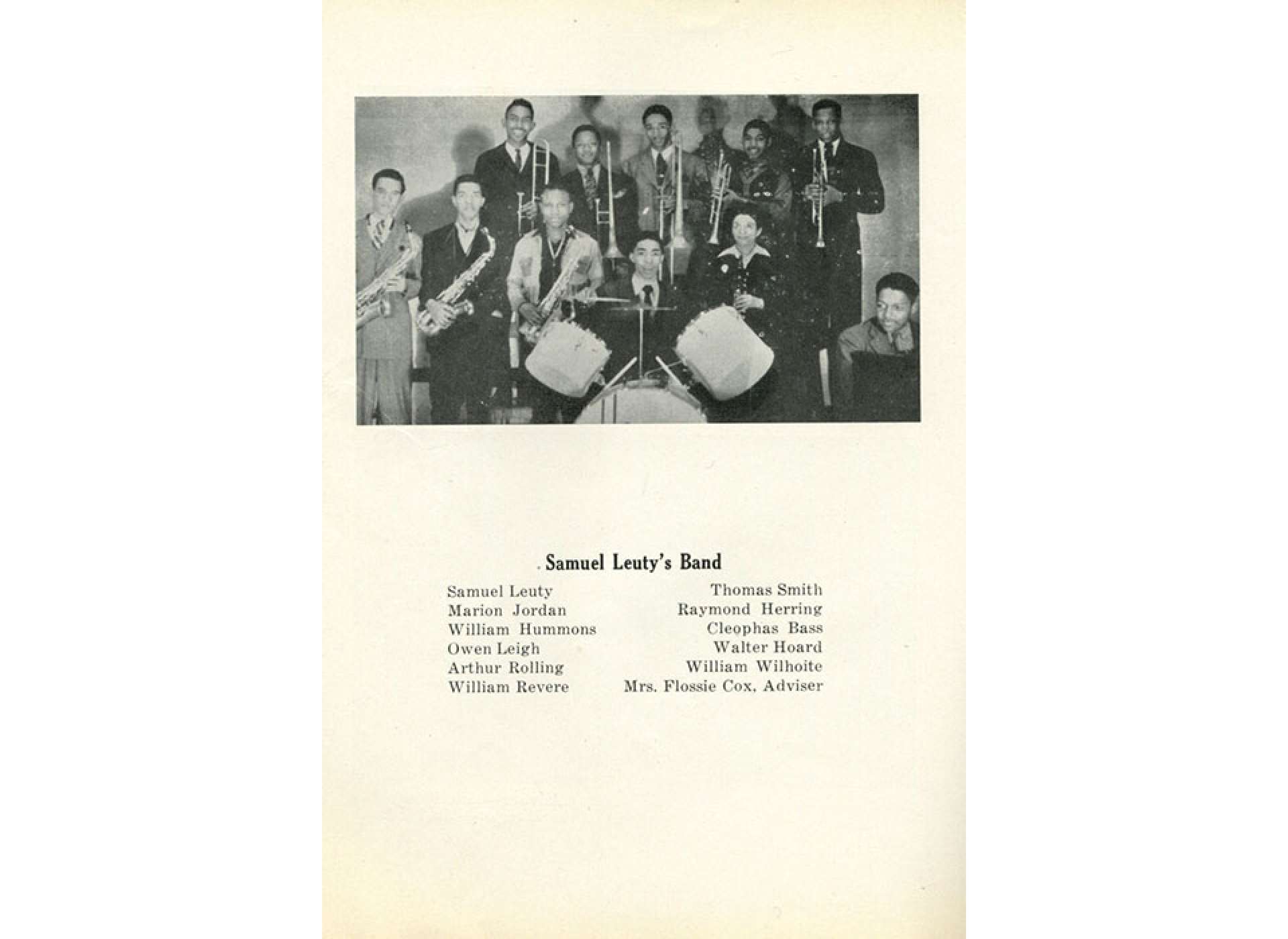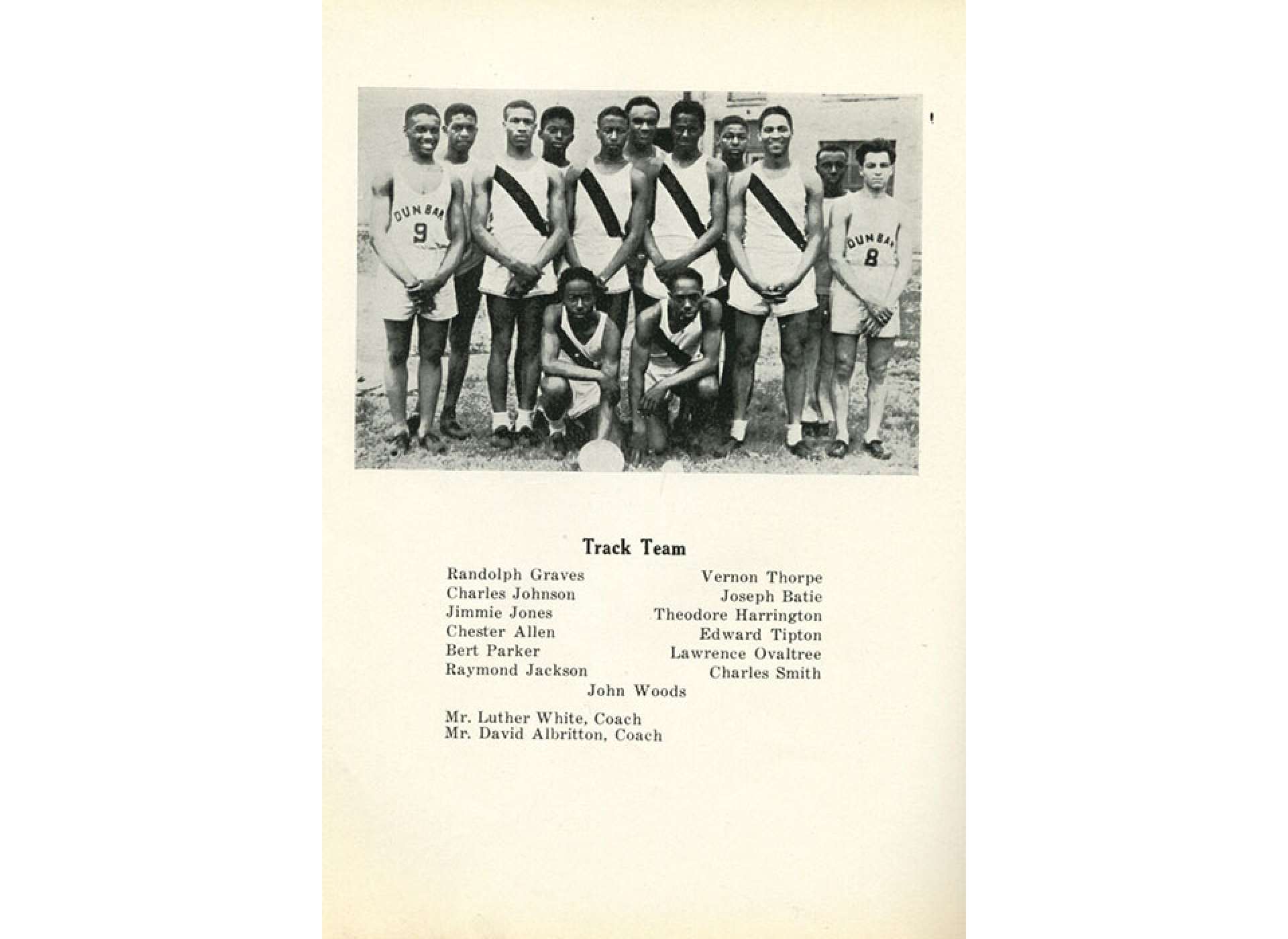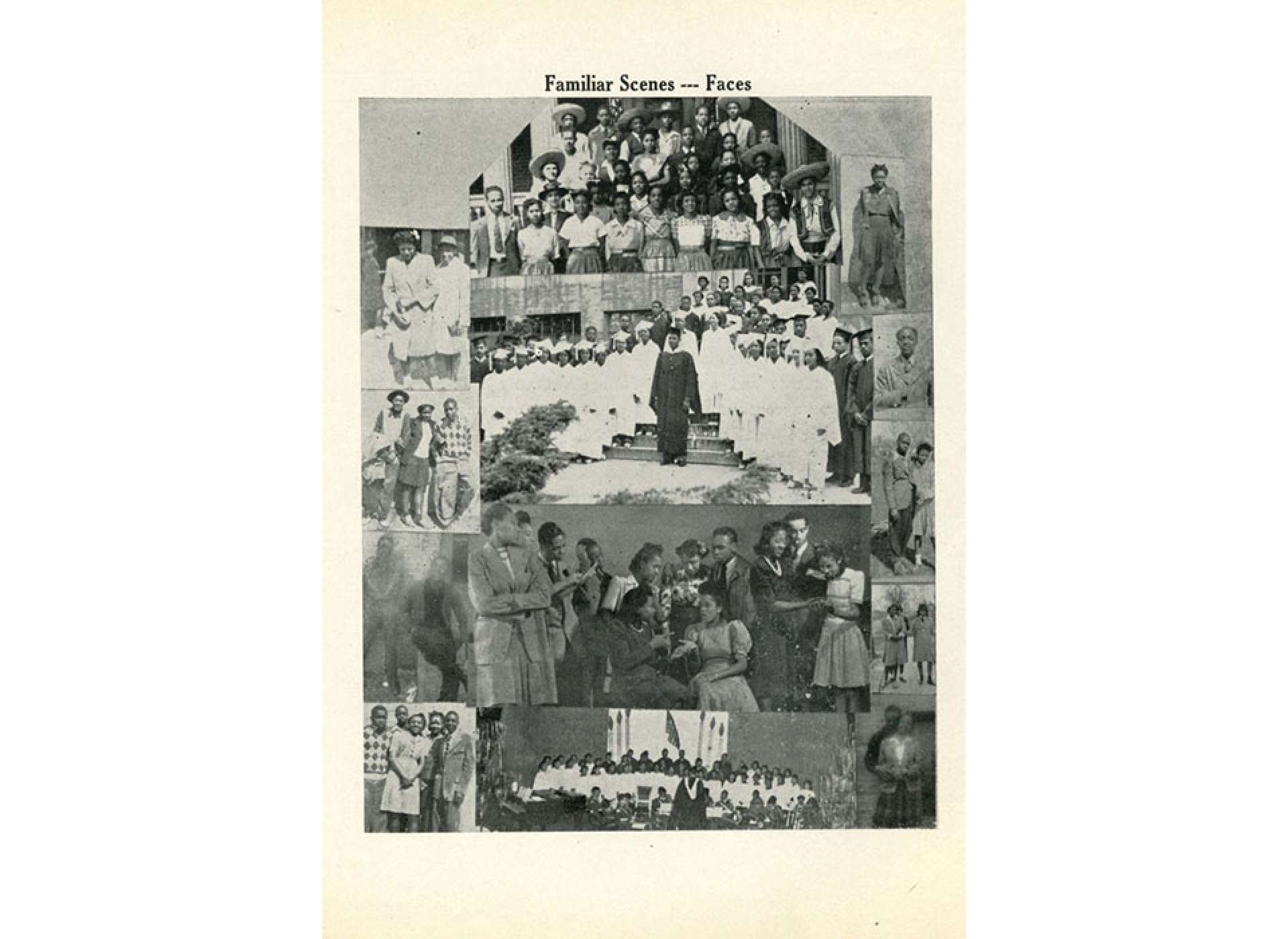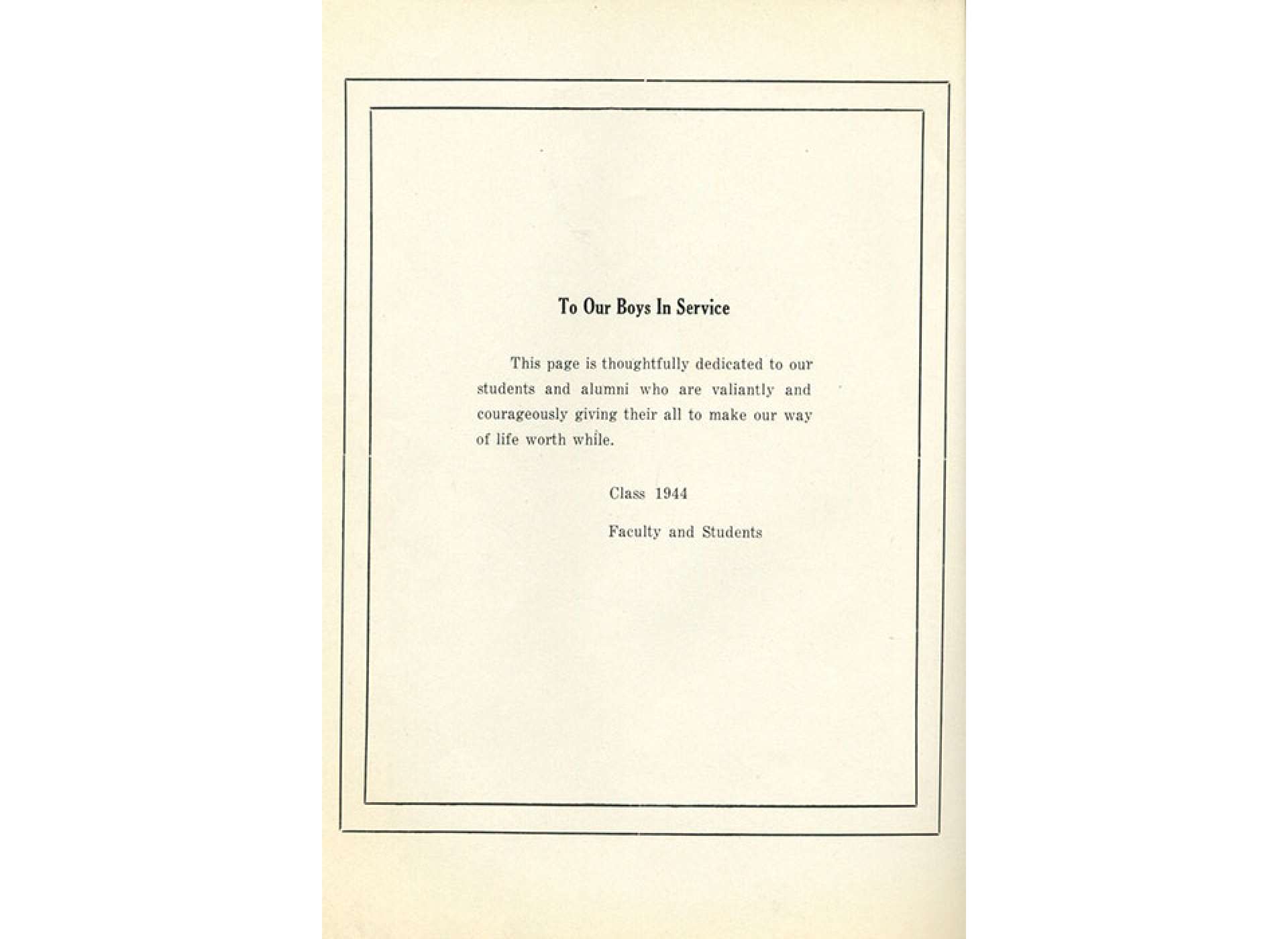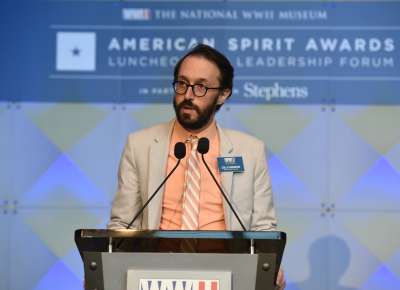"The ill wind of war would be doubly ill if it blew no good to us who have waited so long. Everywhere, therefore, barriers are falling and horizons are expanding; avenues we thought forever closed are yielding to the 'Open sesame' of national extremity. The vicious myth of master and slave races is waxing old like a garment. Here at long last is the flood tide that leads to a well-rounded manhood and to fortune. To hesitate is to be lost; to falter can only bring everlasting reproach to our race. God give you courage to quit yourselves like men and be strong."
With these words, Principal Frederic C. MacFarlane closed his hopeful message to his ‘Young Friends of the Class of 1943’ in the pages of the Dunbar High School yearbook. Named after the late 19th century poet and Dayton, Ohio native, Paul Laurence Dunbar, and originally located at 219 North Summit Street, Dunbar was initially intended to serve as a middle or junior high school. But, soon after its opening in 1931, the school began to admit high school students as well.
Dunbar High School followed in the tradition of America’s first all-black high school in Washington, D.C., with which it shares its name. The school also served as a center of employment for African American teachers, who often found themselves unemployed after completing teacher training due to the preference for hiring white teachers.
Dunbar High School Yearbook 1943
-

Principal McFarlane's letter..."To My Young Friends of the Class of 1943"
-

Dunbar High School Senior Class Officers
-

Dunbar High School Band
-

Dunbar High School Track Team
-

Familiar Faces at Dunbar High School
-

Dunbar High School Student and Faculty Letter To Boys In Service
While Principal MacFarlane’s message is one of optimism, and select pages do show a vibrant student community, Dunbar’s yearbook more closely resembles a pamphlet in its design and construction. With no individual student portraits or prom photos, and measuring at less than 8x10 inches in size, the 1943 Dunbar yearbook demonstrates that separation truly was inherently unequal.
It was a country at war with fascism abroad and tolerating policies of segregation and Jim Crow at home, that the 47 boys and 85 girls of the Dunbar High School Class of 1943 graduated as adults. Principal MacFarlane, earlier in his message, spoke about the importance of an education for his students and also of the many challenges for African Americans that lay ahead:
"If you regard your graduation, then, as the be-all and the end-all of education, as a resting place instead of a starting point for quest of Holy Grail or Golden Fleece, you will have missed the great meaning and challenge not only of commencement, but of life itself."
Principal Frederic MacFarlane
For further glimpses into how World War II impacted the lives of American students, visit See You Next Year: High School Yearbooks from WWII.
Collin Makamson
Collin Makamson is the former Assistant Director of Education for Curriculum at The National WWII Museum.
Cite this article:
MLA Citation:
APA Citation:
Chicago Style Citation:
